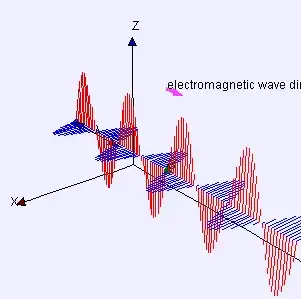Light is an oscillating electric and magnetic field, so it is electrical and magnetic.
Later: re the edit to your question, I think there are two issues. Firstly the interaction with electric charge and secondly the interaction with magnets.
Light does not carry any charge itself, so it does not attract or repel charged particles like electrons. Instead light is an oscillating electric and magnetic field. If you take an electron and put it in a static electric field (e.g. around a Van de Graaff Generator) then the electron feels a force due to the field and will move. This happens when an electron interacts with a light wave, but because the light wave is an oscillating field the electron moves to and fro and there is no net motion. If you could watch an electron as light passes by you'd see it start oscillating to and fro, but it's net position wouldn't change.
This is exactly what happens in your TV aerial. The light (i.e. radio frequency EM) causes electrons in the TV aerial to oscillate and this oscillation generates an oscillating electric current. The voltage this generates is amplified by your TV. At the TV transmitter the same happens in reverse: an oscillating voltage is applied to the TV transmitter, the electrons oscillate in response and the oscillation generates an electromagnetic wave. So the process is oscillating electrons -> light -> oscillating electrons.
I'm not entirely sure what you mean by there is no transfer of electric charge/electrons (as there is in AC/DC current in space). If the above doesn't satisfactorily explain what's going on maybe you could expand on your question.
And finally on to the interaction with magnets.
The big difference between electric and magnetic fields is that (as far as we know) there are no isolated magnetic charges. If there were isolated magnetic charges e.g. if you could watch a magnetic monopole as a light wave passed by then you'd see similar behaviour to an electron. But there aren't, so you don't.
